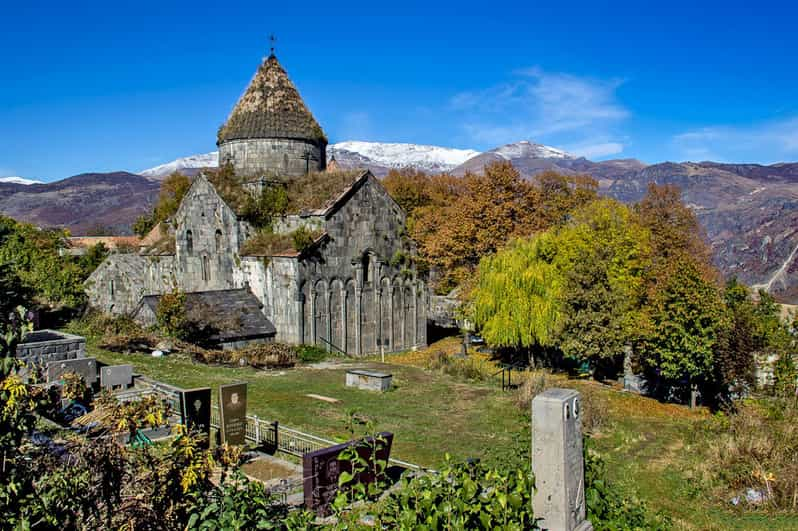бесплатно
Страна:
Регион:
Другие названия:
Значение:
Время визита:
Цена:
бесплатно
Почему Топ:
A unique medieval monastery complex with carved khachkars and frescoes, UNESCO site since 1996. A must-visit for its architectural splendor and spiritual ambiance.
Описание:
The Sanahin Monastery was founded in the 10th century during the reign of King Abbas Bagratuni. The complex includes the Surb Astvatsatsin Church (951), the Amenaprkich Church (957–966), the Surb Grigor Chapel (1061), a scriptorium (1063), an academy, a narthex (1181), a bell tower (13th century), and the family tomb of the Zakharyan princes. The monastery is built of grey basalt, the facades of the buildings are smooth and monolithic, and the interiors are decorated with carvings and bas-reliefs. Burials of nobles took place in the narthexes and galleries. The monastery had a higher school, vardapetaran, where philosophy, rhetoric, and mathematics were taught. In the 11th–13th centuries, Sanahin was a major center of education, theology, and manuscript copying. Large-scale restoration work was carried out in 1652. In 1996, the monastery was included in the UNESCO World Heritage List. Near the monastery there is a single-span arched bridge across the Debed River, built in 1192. Numerous khachkars have been preserved on the territory of the complex, including the tombstone of Archbishop Grigor Tuteord (1181–1184).
Факты:
First scientific exploration took place in 1952.
Inscribed as a UNESCO World Heritage Site in 1996.
The library once housed a 1256 Gospel manuscript.
Over 70 km of passages have been surveyed, with 900 m open to visitors.
Nearby lies the sister monastery of Aghtala.
Значение:
Listed as a UNESCO World Heritage Site in 1996 for its outstanding contribution to medieval Armenian architecture and scholarship. Recognized as part of the shared cultural legacy of humanity.
Категории:
Метки:
Зачем посещать:
Интерес:
Физподготовка:
Лучшее время:
Делать:
historical study
meditation
photography
visit to Aghtala
Доступ:
Roads:
Open:
Attendance:
Info:
Safety:
No lifeguards. Uneven stone paths and nearby drops. Mobile signal is unstable. Low crime rate, no violence reported. No known terrorist threat.
Clothing:
Light clothing in summer, warm jacket and headwear in winter, comfortable shoes.
Climate:
Continental: hot dry summers, cold snowy winters.
Tips:
Arrive early, follow the dress code, bring water, respect the silence and order.
Connection:
No Wi-Fi. Mobile coverage drops within walls and courtyards. A satellite phone is recommended for emergencies.
Resources:
- Lofoten Islands
- Daring to Explore Again
- Bali
- Bosphorus
- Garden Route: живописная дорога вдоль океана
- Great Plains (USA)
- Gibraltar
- Wildberries официально выходит на рынок туризма
- Kostroma (Russia)
- Chechnya
- Uzbekistan
- Brest (Belarus)
- Tourism in Nigeria: Challenges, Growth, and the Path to Regional Leadership
- Mammoths and travel: where to see habitats, traces and digs, and museums
- Egypt
- Everyone says i’m running away
- Lifehacks for buying airline tickets
- Derbent (Dagestan, Russia)
- Liechtenstein
- Nicaragua

 United States
United States